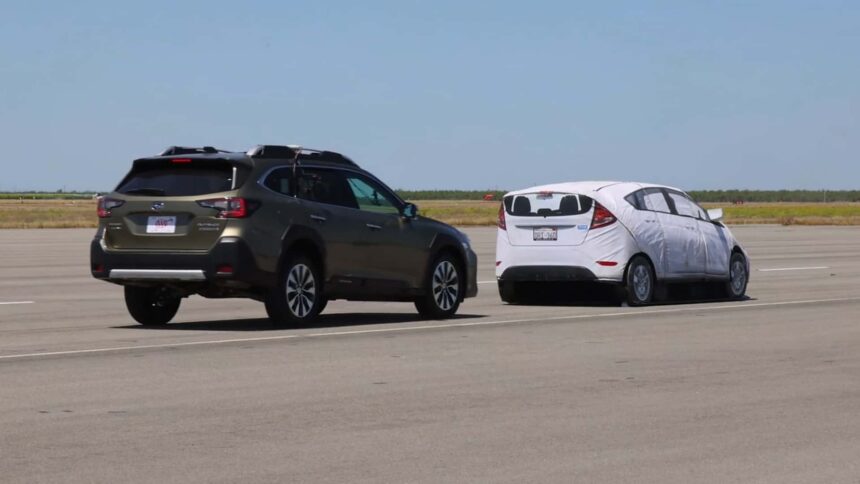A recent study conducted by AAA has revealed significant improvements in the effectiveness of frontal auto emergency braking systems. The study compared new vehicles to those from six years ago and found that newer vehicles are now twice as likely to avoid collisions in avoidable situations. In fact, at speeds below 35 mph, the study reported a perfect 100 percent success rate for collision avoidance.
The study evaluated six vehicles in total, including 2024 models of the Nissan Rogue, Jeep Grand Cherokee, and Subaru Outback, as well as their 2018 predecessors (2017 for the Jeep). All vehicles underwent thorough inspections to ensure that their AEB systems were fully functional and operating correctly. The older test vehicles were also equipped with new tires, brakes, and a four-wheel alignment before being driven 500 miles to break in the new parts. Any necessary software updates were also performed.
During the tests, a soft car test rig made of foam with a vinyl exterior was used as the target. Tests were conducted at speeds of 12 mph, 25 mph, and 35 mph, with pedestrian testing not being performed.
Results from the study showed that, of the older models, only the Jeep Grand Cherokee failed to stop at 12 mph. The Subaru was the only older model to successfully stop at all speeds, while the Nissan cleared the 12 mph run but failed at 25 mph. Both the Grand Cherokee and the Rogue failed to stop before contact at 35 mph.
In contrast, all three 2024 models successfully avoided collisions at all speeds. The AEB systems in the newer vehicles activated much earlier, contributing to their improved collision avoidance capabilities. However, the study noted that at speeds above 35 mph, the AEB systems were less effective. In a separate test, three out of four vehicles were able to avoid a collision at 45 mph, but none could avoid a frontal crash at 55 mph.
Greg Brannon, the director of automotive engineering research at AAA, praised the advancements made by automakers in improving driver safety through AEB systems. He acknowledged that there is still work to be done to ensure that these systems are effective at higher speeds.
Overall, the study’s findings demonstrate the positive impact of technological advancements in modern safety features. While AEB systems are not foolproof, the improvements seen in newer vehicles are a promising step towards enhancing driver safety on the road.







